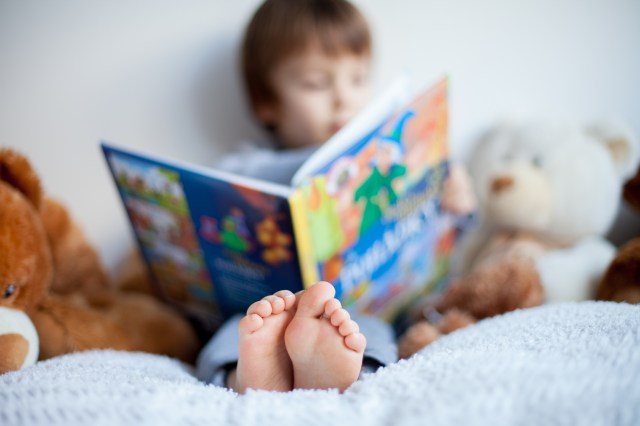“Do you guys know what you’re looking for?” the man’s scratchy voice croaked from behind the counter. His round, friendly face was peppered with a short, white beard. Like Santa after a night of vodka tonics in a black t-shirt with a five o’clock shadow.
“I have no idea what I’m doing but he does.” I nodded at my eight-year-old son. His face was serious as he scanned the stacks of Pokemon cards and comic books behind the counter. The walls that surrounded us were covered from floor to ceiling with more comics and graphic novels.
I’m a writer. I’m an author. And surrounded by the walls of endless reading materials, I’d never felt more out of my element. I never got into comics as a child and graphic novels didn’t enter my vocabulary until I was an adult. To be honest for a hot second I thought they were referring to porn. A quick google search, years ago, dispelled that misconception.
My eight-year-old, though, he confidently moved through the maze. Inspecting each section, meticulously planning what items he wanted to get, even counting up the totals in his head. How many Pokecards and comic books could he get? And at a reasonable price.
I watched him navigate this world the way I navigated the YA section of the library. Enamored with the shelves of novels that held new adventures and worlds and heartache and joy, all just for me. I’d meticulously choose my books based on the max you could check out. I was watching him operate the same way, just with a different writing medium. I was keenly aware of what I was a witness to. History repeating itself in a weird new dimension.
This boy had struggled to learn to read in kindergarten and first grade. Oh the tears he shed trying to figure it out. And the careful words I let escape my lips, trying to be encouraging and non-pressuring, while just wishing I could wave one of the wands from a story we’d read and fix this all for him. In second grade, though, things changed; something clicked. And now as the second grade was winding down, we were standing in a store filled with reading materials that shouted at him from the shelves.
My son isn’t the only boy that faced reading struggles. In 2016 Scholastic conducted a survey of 2,000 children ages 6-17, 52% of boys and 73% of girls said they liked reading books over the summer. Twenty-seven percent of boys and 37% of girls said they read books for fun five days a week. These statistics were nothing new to me. Because I’m in the writing world and reading was so crucial to my happiness, I’d been keenly aware of the reading stigma around boys. I knew when my boys were born, I’d do all I could to encourage them to love books and stories and reading. I’ve been reading to them at bedtime (and more) since they were newborns.
And after all of that foundational building, I still watched my first-born son struggle. I felt his passion for books slipping from my parenting grasp, little wisps fighting to fade away. And that was terrifying to me. Soul crushing. How could my son not love books? My son! I was the girl who climbed trees in the summer with a book in her hand and sat up there reading all by herself, enjoying nature and a good story.
As we often learn as parents, I was wrong. I was afraid for nothing. He needed to do this on his own time. Watching him operate in this neighborhood comic book store proved me wrong. It’s about the type of reading material. He needed to find his niche, the genres that make him feel the way I felt brushing my hands along the spines of shelved books in a tiny neighborhood library, the smell of paper dancing up my nostrils, carrying a calm.
As he added up the totals of his items, yet again, I cut him off. “You can get whatever you want. I’ll buy you Pokemon cards and comics, don’t worry about it. Pick out whatever you want to read.”
He did. One graphic novel and three comics. The third comic, a Hulk one, he shyly brought over to the counter as I was checking out. His shoulders were pulled up in his ears as he grinned and slowly tip-toed over. I held out my arm, and he quickly handed it over, the grin morphing into an ear-to-ear smile.
The next morning, he woke up and excitedly told me, “Hey mom. I’m already on page 20 in the Skylanders book!” My eight-year-old who struggled to learn to read proudly bragged about how he stayed up late reading 20 pages of his brand-new book. For fun. Take that, statistics and stigmas and mom-guilt! He’s a recreational male reader. Boom!
I still don’t get comic books though.
Nicole is boy mom to two small dudes that never stop moving or eating. She is a Pilates instructor and all around fitness junkie. She's a Chicagoan through and through. She loves reading, writing, philanthropy and using a good dose of aromatherapy in a hot bath to unwind.















